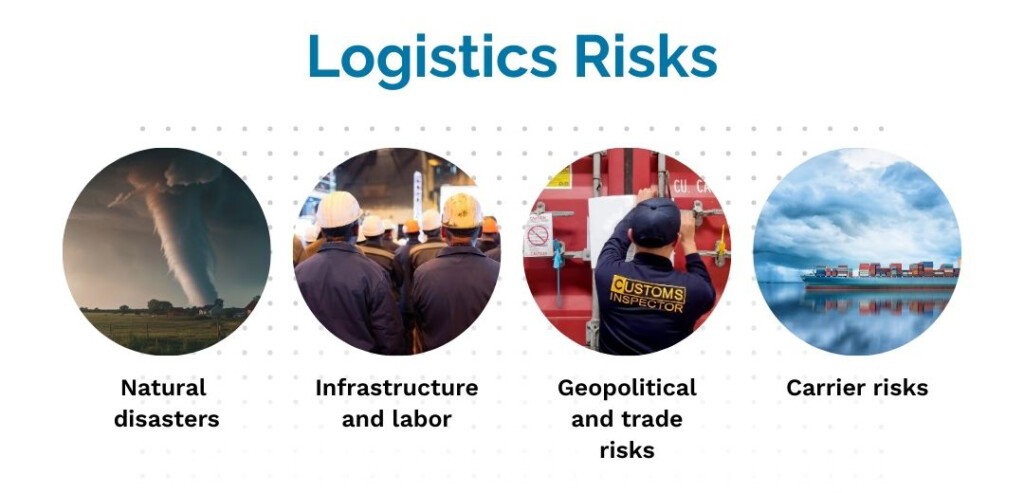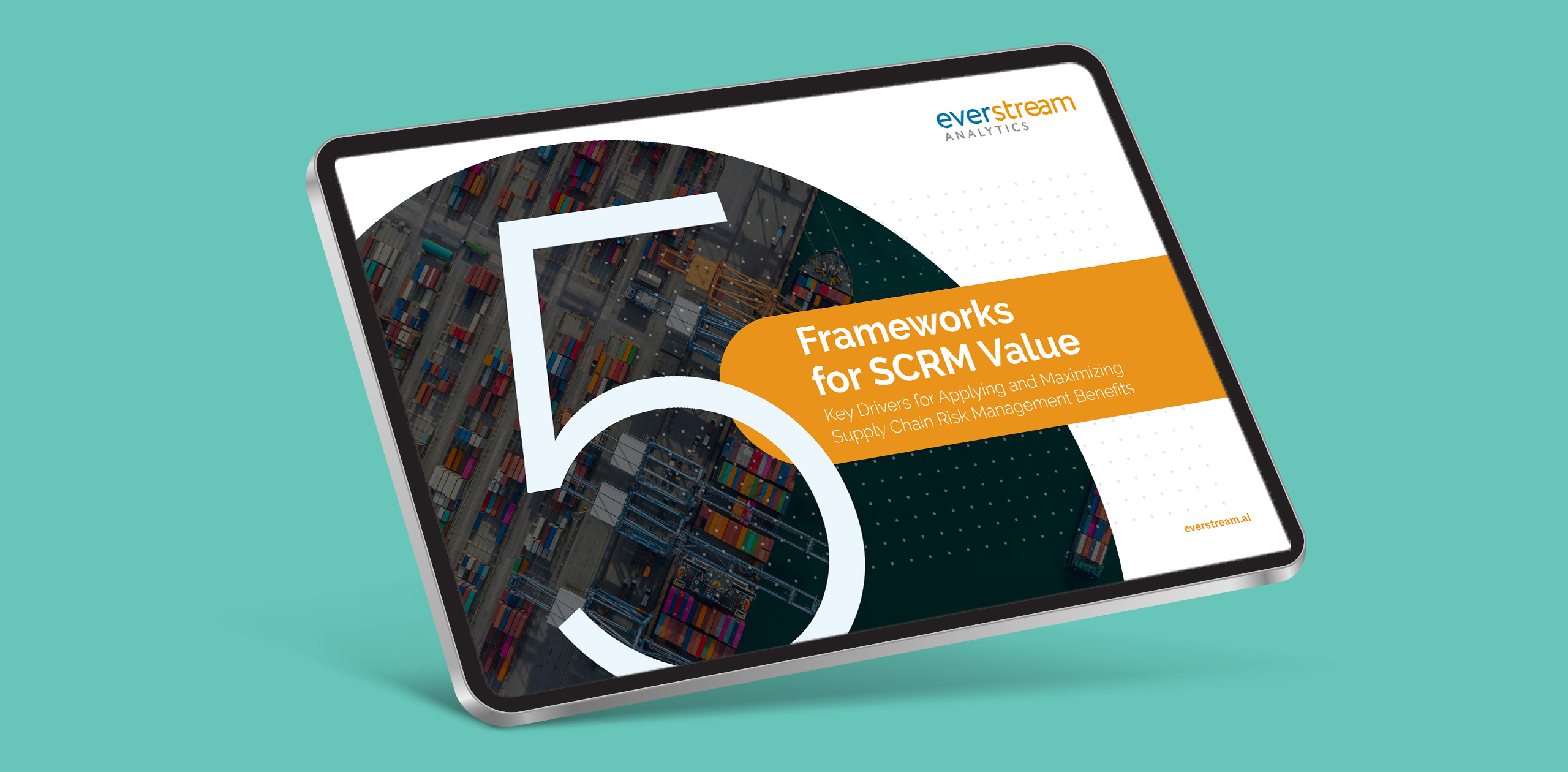Logistics risk management is not just about building supply chain resilience; it is about protecting your bottom line. Most shipments arrive on time without incident. The ones that don’t cost time, money, and a fair amount of frustration for both you and your customers.
Potential disruptions are everywhere: from severe weather to port congestion or even carrier insolvencies.
Many of these risks are predictable. That means with forewarning, you can navigate around disruptive events. Predictive analytics give you a first mover advantage. You can book alternative lanes or modes of transportation before prices spiral, and capacity becomes constrained.
Some risks are more predictable than others. However, even unpredictable events can have very predictable cascading disruptions. Getting ahead of these saves you both time and money.
Here we examine the seven types of logistics risk, their predictability, and potential knock-on effects that increase disruption.
Physical Infrastructure Risks
Bridge, Tunnel or Road Collapse
Predictability: Not Predictable
Collapses and infrastructure failures can disrupt major transportation corridors for extended periods. This forces logistics managers to develop alternative routing strategies that may involve significantly longer transit times and higher costs.
These disruptions are particularly challenging because they often affect multiple transportation modes simultaneously. A bridge collapse can impact both trucking and rail transportation. Similarly, port infrastructure failures can affect both ocean and inland waterway transportation.
Predictable cascading disruptions:
- Congestion across alternative routes
- Increased transit and delivery times
Port Congestion
Predictability: Predictable
Port congestion represents a persistent and growing challenge within this category. Ports become overwhelmed when cargo volumes exceed their processing capacity. The resulting delays affect not just immediate shipments but also future capacity planning and schedule reliability.
Various factors can cause port congestion. These include weather, labor strikes, equipment failures, cyber-attacks, or disruptions at connecting transportation nodes.
Predictable cascading disruptions:
- High volumes and longer dwell times at nearby ports
- Capacity constraints
- Greater demand for alternative modes of transportation
- Price hikes for expedited freight
- Higher than expected detention and demurrage charges

Figure 1: Predictive analytics can warn you of upcoming logistics risks allowing you to mitigate them before they become disruptions
Weather and Natural Disaster Risks
Weather-related disruptions and environmental risks are some of the most predictable yet impactful risks in logistics operations. The frequency and severity of extreme weather events have increased dramatically over the past two decades. Severe weather events increased by 83% since the turn of the century. The resulting economic losses increased by the same percentage.
This trend has made weather risk management an increasingly critical component of logistics planning.
Hurricanes, Typhoons and Storms
Predictability: Predictable
Typhoons and hurricanes not only force the closure of transportation facilities during the event itself but can also cause infrastructure damage that extends the disruption period.
The predictable nature of many weather events creates opportunities for proactive risk management. By leveraging advanced forecasting, you have time for contingency planning to mitigate risks. This could mean shipping before or after a storm, or choosing a different route, lane or mode of transport.
Predictable cascading disruptions:
- Flooding leading to closed roads
- High winds causing port and airport stoppages
- Increased transit and delivery times
- Price hikes for expedited freight
Wildfires
Predictability: Unpredictable
Wildfires can disrupt major trucking routes and transportation corridors. Unlike hurricanes, which typically provide several days of advance warning, wildfires can develop and spread rapidly. The smoke and air quality issues associated with wildfires can also affect airport operations and driver safety, creating additional complications for logistics planning.
Predictable cascading disruptions:
- Road closures due to wind patterns directing the path of wildfires
- Port and airport stoppages due to smoke
- Increased transit and delivery times
Drought
Predictability: Predictable
Drought conditions can reduce water levels to the point where barge operations become impossible or severely restricted.
Predictable cascading disruptions:
- Increased dwell times at waterways
- Higher waterway transit fees
- Increased demand for alternative modes of transportation
Earthquakes
Predictability: Unpredictable
Certain regions of the world are prone to earthquakes. Unfortunately, these are unpredictable. However, using the magnitude of the earthquake it is possible to see which regions will be most affected in its aftermath.
Predictable cascading disruptions:
- Tsunami warnings closing ports
- Greater demand for alternative modes of transportation
- Capacity constraints
- Price hikes for expedited freight

